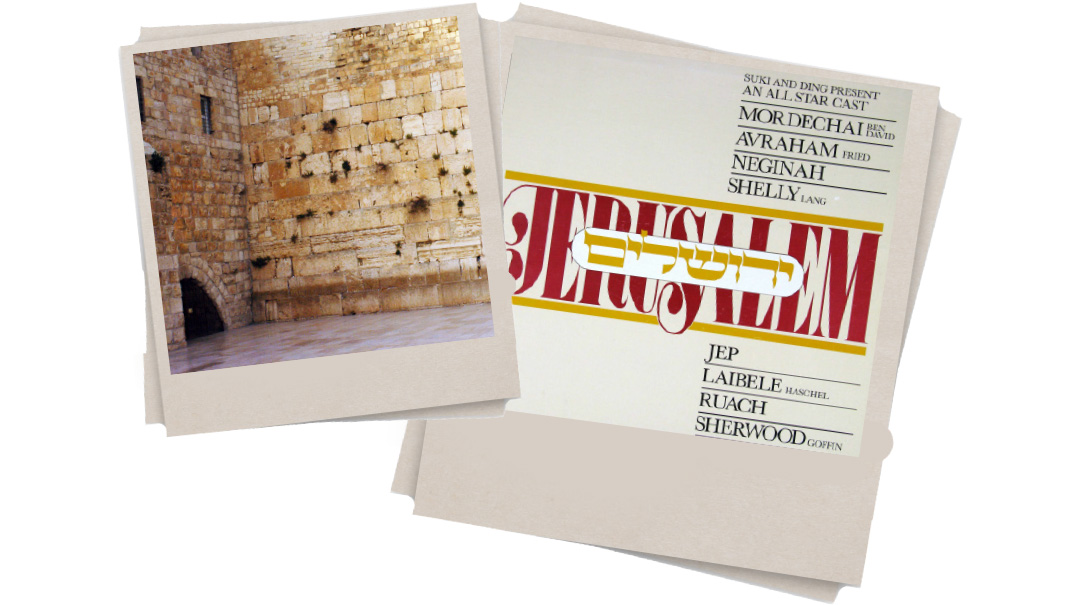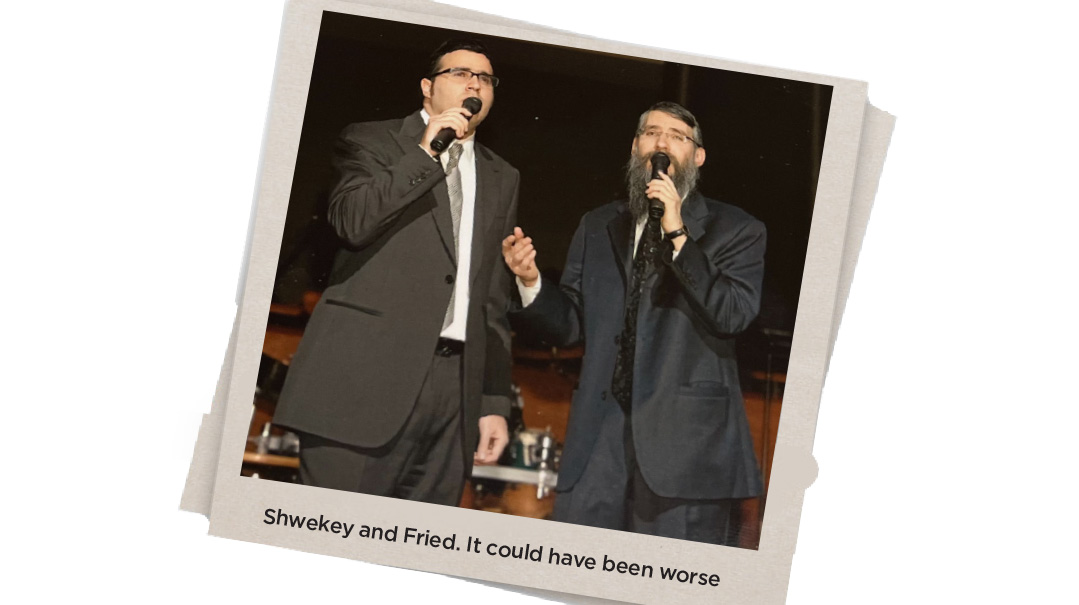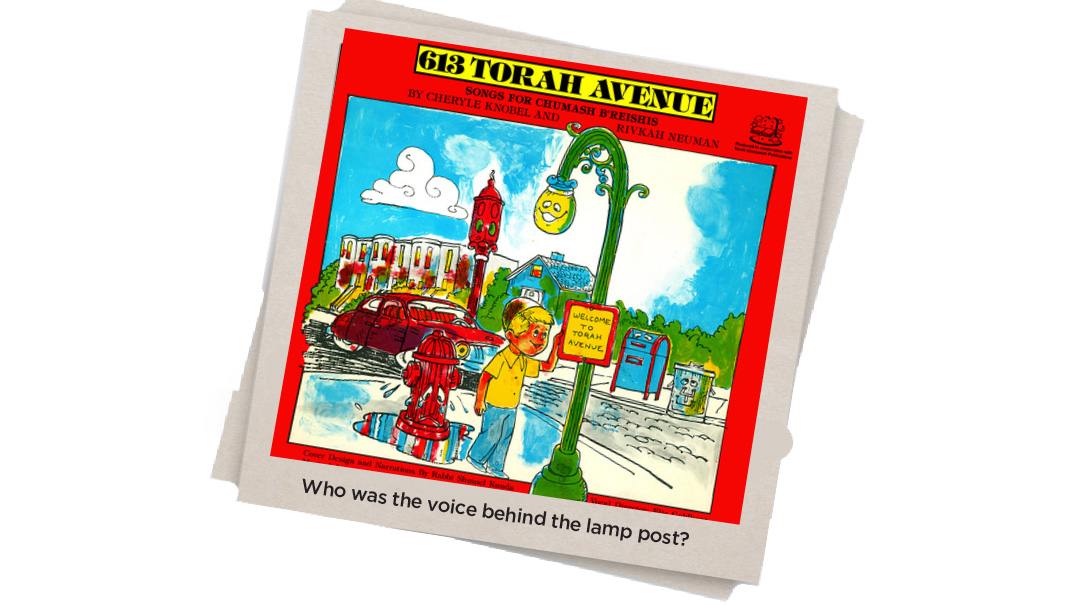Major Change

“There will be a time… we’ll have back our prayer, and we’ll have back our song.”

I was recently reminiscing with my business partner and longtime friend Suki Berry, and we decided to write an article together about the first all-star album we produced back in 1983, entitled Yerushalayim/Jerusalem. It was a bit of an experiment for us, creating an album all about Yerushalayim, with an emphasis on the pain of galus and hope for Geulah. Originally, we considered calling it Songs of Tishah B’Av, but we realized that wouldn’t have much commercial appeal. It would be like publishing a Yom Kippur cookbook.
Although not all the songs we chose were sad and filled with longing (“Samachti” and “Shabechi” are songs of joyous praise), there was definitely a Tishah B’Av touch.
For the album’s English song, we chose “There Will Be a Time” (“Eichah”), composed by Chumi Berry, with lyrics written by her sister Mirel Simcha. No one could pull off that song with more heart, emotion and feeling than MBD, singing of how, in the aftermath of the Churban, it looks like everything is over — and there was nothing to bring that home like MBD chanting the first and last pesukim of Eichah as the intro and interludes in order to bring out that horrible feeling of destruction.
Yet there is long-range hope, as “there will be a time… we’ll have back our prayer, and we’ll have back our song.”
Why does the tune to Eichah arouse so much emotion? Most people are familiar with the two common modes of the musical scale: major and minor. Songs composed in major generally bring a sense of joy, while the minor scale is often associated with longing and sadness. It’s fair to say that most Jewish songs we know — from the traditional to the modern — are in the minor mode (with some exceptions, such as chassidish marches and many children’s songs). What I find amazing about the way we sing Eichah is the constant back and forth between the major and the minor scales. Perhaps there’s a powerful message here: While songs of galus will naturally be in the somber mode of “minor,” there remains the optimism of a bright future, reflected by the “major.” How fitting that when it comes to our “Anthem of Galus” — the niggun for Eichah — the major and minor are enmeshed.
Avraham Fried was pretty much starting out when we picked him for the song “Al Kein Tzion,” composed by Rochel Miller. The words are taken from the Nacheim tefillah in the Minchah Shemoneh Esreh of Tishah B’Av, and in keeping with our theme, for the interlude we chose the well-known tune for “Eili Tzion Ve’areha” (kinnah 45). It’s interesting to note that the tune we sing for “Eili Tzion,” while mostly “minor,” has elements of the “major” feel as well.
If you’re looking for the original recording of the classic “Reena V’Yeshuah” (“…Sasson vesimchah, venas yagon ve’anachah, beshuvi, beshuvi l’Yerushalayim”), composed by Moshe Hauben of JEP fame, it was here (it’s been rerecorded on several albums over the years). The words come from kinnah 31, “B’tzeisi MiMitzraim,” a back-and-forth lament going from the triumph of leaving Mitzrayim to the brokenness of being exiled from Yerushalayim. The song ends with the final lines of the kinnah, the joyous ultimate return to Yerushalayim. Even though it’s from Kinnos, Moshe Hauben conceptualized it as an upbeat song — and so it’s been for the past four decades. Ali Scharf and Rivi Schwebel did a great job capturing its spirit.
We included the Dveykus classic “V’leYerushalayim,” which was especially popular then (and still is), and for our finale, we created an 18-song medley themed on Yerushalayim. Some of the selections were enduring classics, some resurrected oldies, including “Shiru Lanu” from the perek of Al Naharos Bavel, sung by Sherwood Goffin a”h and originally appearing on the 1966 Pirchei album Eilechah. The niggun was composed by Chazzan Pinye Spector, who was the baal tefillah of the Boyaner Rebbe ztz”l in the early 1900s.
When we created our “Tishah B’Av album” back then, we were actually hoping it wouldn’t be relevant in 2022. But we know that as we’re in the minor mode of galus, it’s indeed the “minor” part of the story, just a temporary state on the way to the most “major” development. May we go from darkness to light, from Mitzrayim to Yerushalayim, and from minor to major, speedily in our days.
(Originally featured in Mishpacha, Issue 922)
Oops! We could not locate your form.






